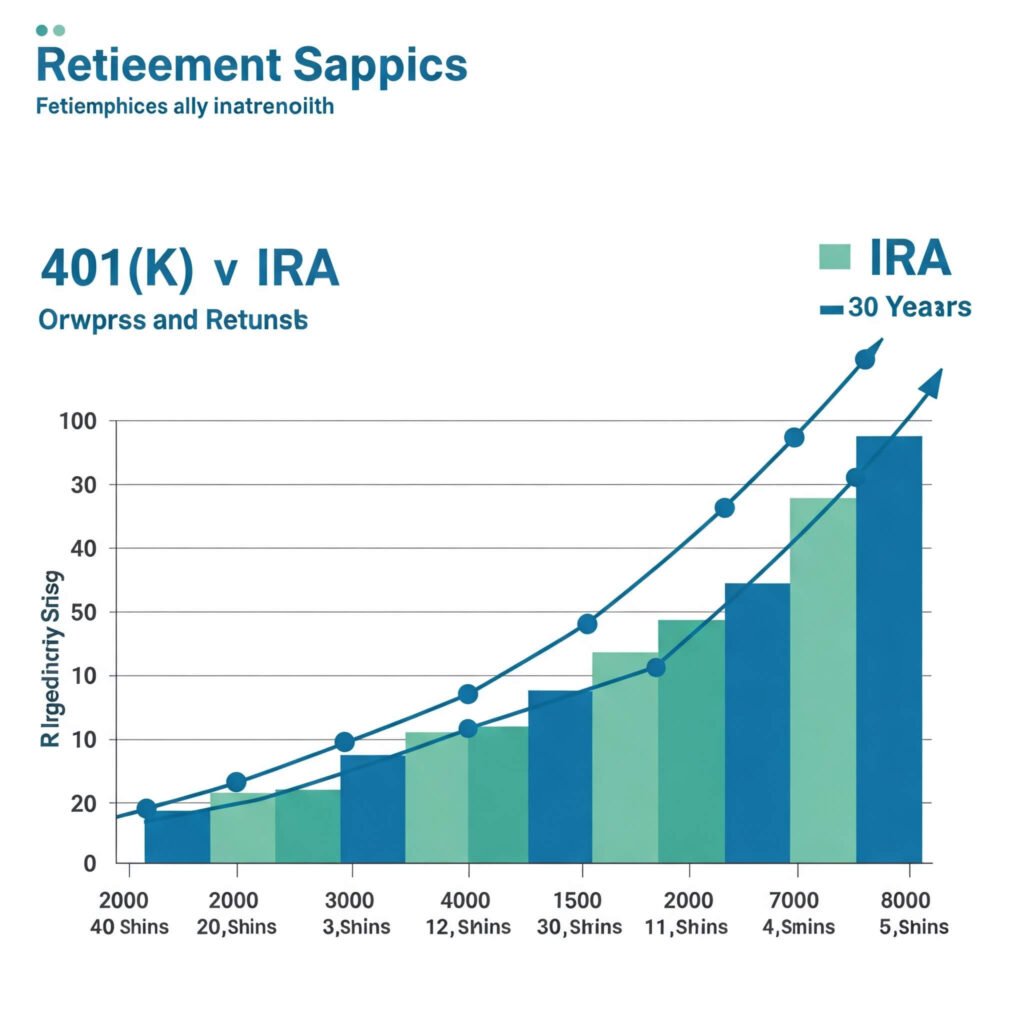Best Retirement Plans of 2025—401(k)s, IRAs, Roths—hinge on fees, matches, and your income, but picking one’s like choosing a coffee order during a rush. These tips? Born from my soggy scrolls, late-night app checks, and one mortifying call where I misread my contribution limit. Tip from my flops: start small; I waited and missed a year of growth. Contradiction: I preach planning, yet I skipped contributions for a music festival—chaos vibes.
401(k): The Workhorse of Best Retirement Plans of 2025 for Job Hustlers
The 401(k) is a beast among the best retirement plans, especially if your job offers a match—free money, yo. I started one with a 4% match at my side gig, max contribution $23,500 in 2025. Pro: tax breaks, employer match. Con: high fees if you pick wrong; I got hit with a 1.5% expense ratio, ouch. Surprising: auto-escalation bumped my savings without me noticing. Check Fidelity—don’t sign up mid-rainstorm like me, wet fingers glitched the app.

Roth IRA: The Flexible Best Retirement Plan for Young Dreamers
Roth IRA, you’re the chill vibe in best retirement plans—pay taxes now, withdraw tax-free later. Opened one with Vanguard at 0.04% fees, $7,000 max for 2025. Pro: tax-free growth, flexible withdrawals. Con: income limits; my side hustle almost DQ’d me. Surprising: you can pull contributions penalty-free—saved my butt during a rent pinch. Scope Vanguard—forgave my soggy app fumble.
- My Rookie Tip for Best Retirement Plans: Start Roth early; compound interest is wild.
- Why It Fit My Mess: Fit my low-income, high-dream hustle.
Traditional IRA: The Classic Best Retirement Plan for Tax Savers
Traditional IRA’s a solid pick among best retirement plans for tax breaks now. Set one up with Schwab, same $7,000 cap, 0.05% fees. Pro: tax-deductible contributions. Con: taxes on withdrawal; I miscalculated my future bracket, oof. Surprising: rollover options from old 401(k)s. Check Charles Schwab—don’t apply mid-coffee run like me, spilled on my laptop.
SEP IRA: The Freelancer’s Best Retirement Plan for Gig Warriors
SEP IRA’s a gem for self-employed folks in best retirement plans, with a $69,000 cap in 2025. Started one for my freelance gigs, low fees at Fidelity. Pro: high limits, tax-deductible. Con: complex setup; I botched paperwork once, delayed a month. Surprising: scales with income. Peek Fidelity—saved my chaotic gig life.
Outbound Link: Explore Roth IRA rules at Fidelity.com.

NerdWallet & Bankrate: Hubs for Comparing Best Retirement Plans
NerdWallet and Bankrate are my go-tos for sifting best retirement plans, no account dings—average 401(k) fees around 0.5-1%. Used ‘em in a rainy haze, skylight leaking. Pro: free comparisons, provider filters. Con: info overload; I got email spam, unsubbed like a maniac. Surprising: local advisors via zip code. Dive NerdWallet or Bankrate—my cheat codes for smarter picks.
Outbound Link: Details on SEP IRAs at Charles Schwab.

Wrapping My Rant on the Best Retirement Plans
Whew, spilling this while Seattle’s rain taps my skylight—feels like shaking off a wet flannel. These best retirement plans didn’t erase my flops (that festival skip? Cost me a year of growth), but they got me to $5,000 saved, a decent start, and hey, I’m not eating cat food yet. Contradiction: I curse financial math, yet I’m stoked for beachside dreams—peak Seattle hustle, right? If you’re in the US grind—bills piling, retirement calling—vet these best retirement plans, start small like I forgot to, and dodge my dumb moves.




